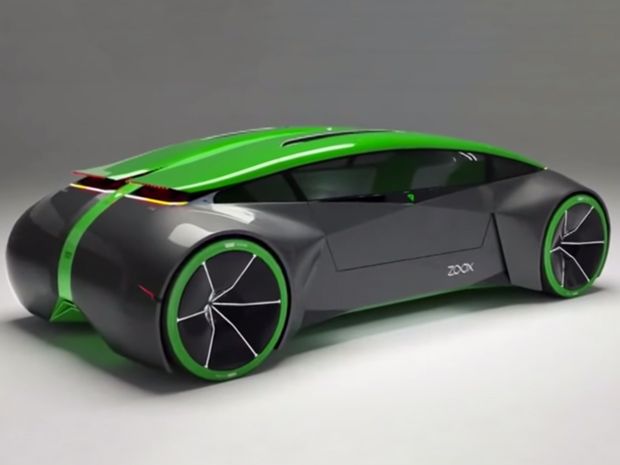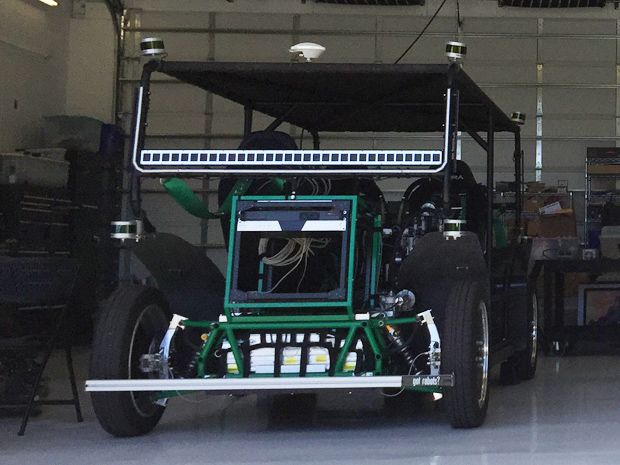Exclusive details and images of the stealthy startup’s experimental vehicle

The original Zoox concept.
You wait for years for a self-driving taxi, then four come along at once.
Google and Uber’s efforts have been well publicized, and IEEE Spectrum broke the news in February that Nissan was also developing a robotic cab. Now we can reveal exclusive details about a startup that hopes to put fully autonomous taxis on the road by 2020.
The company is called Zoox, and it’s the brainchild of the Australian designer Tim Kentley-Klay and Jesse Levinson, an engineer who worked at Stanford University with Sebastian Thrun, the first director of Google’s self-driving car program. Their vision is for a sleek, modernistic, deluxe electric taxi with gullwing doors, in which four passengers face one another. The car is code-named L4, a play on the National Highway Traffic Safety Administration’s classification of full automation as Level 4. Unlike rival designs, it has no front or rear end but can drive equally well in either direction. It has no windshields facing either way, nor does it have a steering wheel or brake pedal.
Speaking at a conference in Berlin last year, Kentley-Klay said, “At the moment, mobility is crushing the soul: Don’t speed, don’t drink, don’t text. But what if we [ask], How can this stuff be awesome? What inspires me…is giving back people their lifestyles, so they can do what they want to do: texting, vegging out, drinking.” The Zoox test mule, which is currently being built in a garage in Menlo Park, Calif., is based on an innovative Swedish research vehicle with wheels that can be steered, driven, braked, and cambered independently.

Zoox’s experimental robo-taxi in the garage at SLAC appears to have
multiple lidar modules.
The vehicle is conceived to have modules that
drive, camber, and steer each wheel independently. So it will be able to
drive in either direction.
Late last year, Zoox secured seed funding from a major venture capital firm and entered stealth mode to avoid tipping off rivals. It declined to comment for this story. Nevertheless, Spectrum has pieced together the tale of how a designer from Australia with no auto industry experience intends to revolutionize 21st-century transportation, including a first look at the technology Zoox is using to develop its vehicle, the venture-capital firm funding it, and exclusive photos of the car and workshop.
Kentley-Klay’s first career was in commercial media. He founded a successful animation studio, a digital media company, and a video production house, and he spent most of the past decade directing television commercials and building his businesses. Then, in 2013, he suddenly switched gears. Struck by the potential of emerging self-driving technologies, he sketched out concept designs and realized he was thinking about building the world’s first autonomous taxi.
“I know that sounds crazy,” he writes on his website. “But when you think through the mobility problems we face against the imagination of what autonomous technology allows, you would be crazy not to do it!”
Kentley-Klay formed a company called Zoox Pty. in his hometown of Melbourne and began talking with technology and car companies around the world. He visited the University of Sydney, Stanford, the MIT collaborative project in Singapore, and Singularity University, in California, to share his vision: “Zoox is not an automobile company. This is what comes after the car,” he wrote on his site. “I have in my head a concept design…so extreme it will have philistine giraffes gone wrong like [former Top Gear host] Jeremy Clarkson throwing back shots of Prozac to calm down.”...MORE